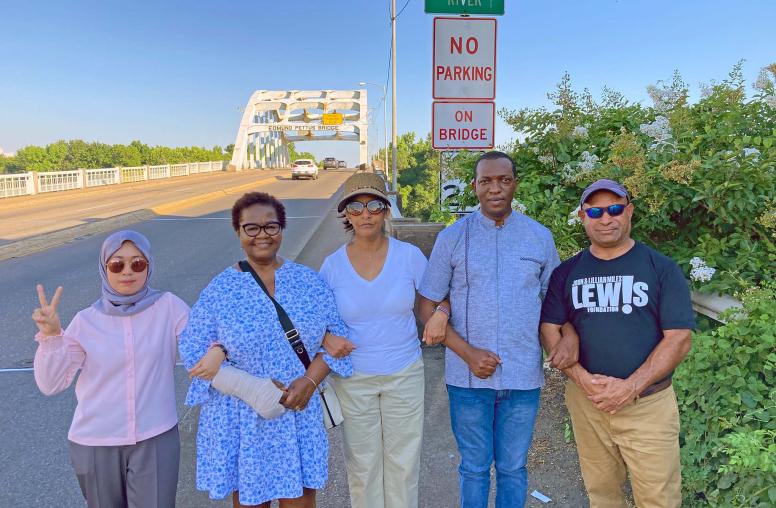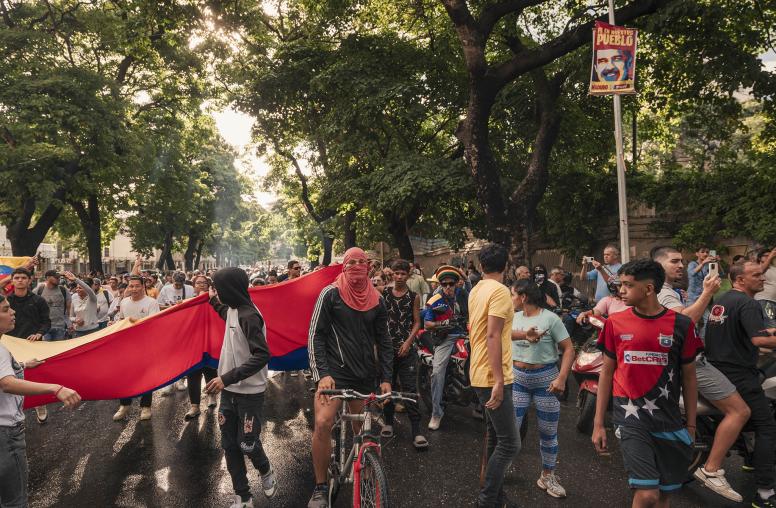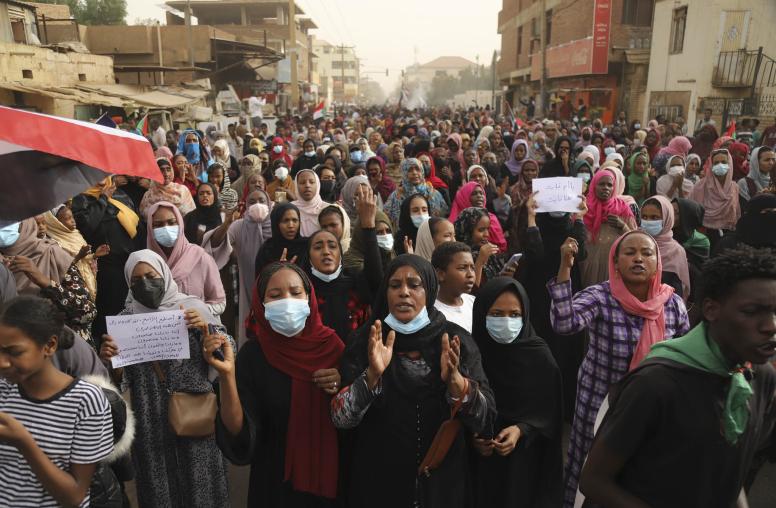Promover sinergias entre la acción no violenta y la construcción de paz
¿Boicots o negociaciones? ¿Presión o compromiso? ¿Cuáles enfoques, y en qué secuencia, son más eficaces para lograr una paz justa y sostenible?

En 1971, la activista feminista no violenta Bárbara Deming escribió sobre “revolución y equilibrio”, y afirmó que los activistas necesitaban “dos manos de no violencia”: una mano con la palma hacia adelante para decir: “¡Basta de injusticia!” y la otra para estrecharla en un apretón de manos. Para construir sociedades justas, inclusivas y pacíficas, se necesitan personas que estén dispuestas y sean capaces de usar diversos enfoques, como la acción directa, el desarrollo de relaciones, la movilización de voluntarios, el diálogo y la negociación. Sin embargo, estas actividades a veces se consideran independientes o incompatibles. Los activistas populares saben cómo participar en protestas y en otras formas de acción directa no violenta, pero es posible que tengan menos experiencia para facilitar una reunión delicada con diversos grupos y opiniones. Las personas constructoras de paz pueden destacarse en el diálogo o en la negociación, pero, tal vez, pueden atascarse cuando un grupo tiene más poder que otro, lo que dificulta que se alcance una resolución justa. Cada enfoque tiene su propia historia, comunidad de práctica, bibliografía y programas de educación y capacitación.
Este curso busca reducir esta separación e ilustrar cómo los métodos más estratégicos y eficaces de ambos campos pueden fortalecerse mutuamente para fomentar la justicia, promover los derechos humanos y lograr una paz sostenible. Es para activistas que desean reunir diversas coaliciones, movilizar comunidades y desplazar el foco del poder, y para personas constructoras de paz que intentan abordar las asimetrías de poder y concientizar a la sociedad sobre asuntos clave para abrir el diálogo y lograr capacidad de influencia en las negociaciones.
Agenda
- Introducción a la acción no violenta y la construcción de la paz
- Poder y transformación de conflictos
- Planificación estratégica y evaluación de conflictos
- Tácticas de acción no violenta y enfoques de construcción de la paz
- Planificación de la acción
- Conclusión
Instructores
- Maria J. Stephan, Co-directora general y Organizadora en jefe, The Horizons Project
- Nadine Bloch, Directora de capacitación, Beautiful Trouble
- Lisa Schirch, Investigadora principal, Toda Peace Institute


